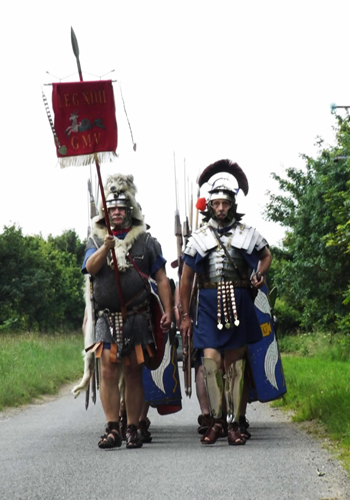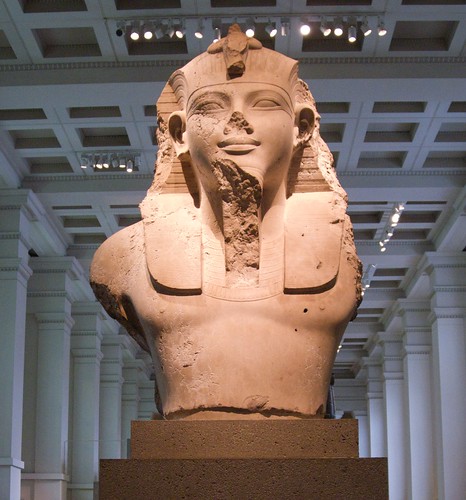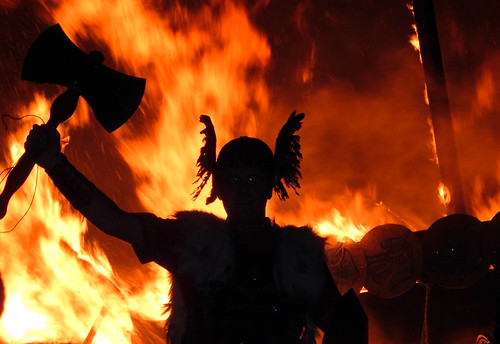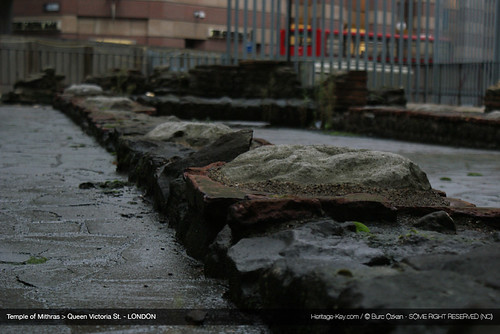“Are there even 10 Roman walls in Britain?” I hear you ask… Read on and see for yourselves. 1. Hadrian’s Wall The Roman wall. By a distance the most famous Roman ruin in Britain, Hadrian’s wall was a way for the Romans to do more than just protect the northern border of the Empire. It marked their territory in a way that would leave those who came against it in awe. It was a protective measure, designed as an impassable obstacle to any invader, but also a controlling structure, monitoring trade across the border and collecting levies. The strength of…
-
-
The latest looks are in from the long and straight catwalks of Rome. Darlings, for too long we have contented ourselves with the same-old same-old. Celtic looks bereft of new ideas or new materials. All that is about to change: the Romans are on our shores and are here to stay. We are at the start of an exciting period, the conquest will revolutionise the look of Britain. Out with the old and in with the fabulous new! Romanise, Modernise, Glamorise! Classic fashionadvice for Brittaniaby Claudius Campus Celtic fashions have been limited by the colours and fabrics available on the…
-
Re-invented by the Victorians, under the name of Boadicea, Boudicca (starring in this Ancient World in London video) was presented as an idol of nationalism, of British warrior tradition and, somewhat incongruently, as a figurehead of imperialism, even though this was the thing she had fought against. Her statue sits directly opposite Big Ben and the Houses of Parliament, overlooking the River Thames at the very heart of London. There she stands in her chariot looking over the city like some kind of fierce guardian angel for the British. But what is she doing there? Should we really be touting…
-
This week a group of archaeologists and volunteers from Colchester Archaeological Trust and Destination Colchester attained their goal to raise 200,000 to buy a plot of land that covers the remains of part of what was once the only known Roman Circus in Britain. The appeal started as recently as December 2009, and was quickly won, with the help of celebrity endorsements and public goodwill. We spoke to Philip Crummy, Director of the Colchester Archaeological Trust about the achievement. HK: Congratulations on raising the 200,000 sum you needed, how do you feel? PC: We feel quite overwhelmed by it all,…
-
The warrior Queen, the avenging mother, the woman scorned. Ask any English person who led ‘us’ in the fight against Rome and they will tell you about a woman whose fame outweighs her achievements. Called Boadicea, Boudicca or Boudica, she has a legendary status, like Vercingetorix in Gaul, as one of the leaders of the old world who fought with courage against Rome. Hopelessly outmatched in so many ways, they represented tradition, their religions and some would say freedom against foreign oppressors. The logistical capability and military precision of the Empire meant that resistance to Roman dominance was in the…
-
Tutankhamun has always captured popular imagination, and been a major draw for museums. The British Museum’s 1972 exhibition of artefacts from his tomb smashed all expectations in the box office, drawing over 1.6 million visitors over its nine month duration. The pharaoh nicknamed ‘King Tut‘ has been the source of more speculation, satire and popular culture references than any other male king of Egypt. Last week pathologists announced the results from their studies into the genetic relationship of eleven mummies from the Egyptian New Kingdom (mid 16th to early 11th centuries BC), including those of the legendary pharaoh Tutankhamun. The…
-
Fellow residents of our Early-Medieval Britannia! Many of you will have become aware of strange men coming from oversees to our green and pleasant island home. You may be wondering who these people are, what they have come for and how long they plan to stay. To we Britons, their barbarian and guttural languages all sound very much the same… but let me inform you that in fact these visitors actually come from different places and each have different cultures- though they share many traits, they will be offended if you should accidentally confuse them for one another. So how…
-
Georgiana Aitken, Head of Sale, Antiquities at Christies South Kensington, was kind enough to answer my questions about auctioneering. HK:Is it possible for an ordinary person to acquire items from antiquity? If you had, say, a few thousand pounds to spend? GA:Yes absolutely, antiquities are much more affordable and accessible than people would think. Estimates in our sales start at 500. HK:How healthy is the antiquity market at the moment from the point of view of the vendor and auctioneer? Has it been hit by the global economic downturn? GA: The Antiquities market has remained buoyant with strong results in…
-
We’ve come a long way from the time when Ugg would mutter inanities to Uggetta in the cave, present her with a wad of crushed up flowers and move in for the kiss- and if she resisted he would reach for his club, gives it the old ‘knock on the head and drag away’ routine. Nowadays, for example, we do all the inanities on dating websites or in noisy bars. The rules of romance and courting have been shifting rapidly in the last 50 years and now many people are so clueless as to what they are supposed to do…
-
Like any major western city, modern London encourages its residents to live a lifestyle focussed upon the secular. On the surface, finance, business, fashion, the career and socialising outwardly seem to be the major concerns of Londoners as they rush around town. However, one does not need to look far to be reminded of the fact London is very much a religious centre, on top of being the hub for so many other preoccupations of British lives. St. Paul’s Cathedral has been dominant in the city skyline, in one form or another, for nearly a thousand years. Westminster Cathedral and…







